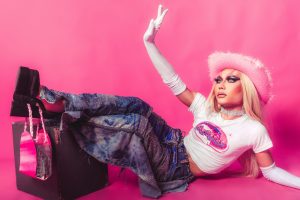Pop art has been around for almost 60 years.From soup cans to comic books, the art movement has presently found itself to be an important part of different popular cultures from around the world. But where exactly did it come from?
Contrary to popular belief,Pop Art did not start in the United States. While it is true that this is whereits popularity peaked in the 1960s, it was first practiced in the UnitedKingdom 13 years earlier. It started when the UK was experiencing its highesteconomic success. A time when a large percentage of the population found itselfhaving disposable income way beyond its needs.Productivity was at an all-timehigh, which lead to the development of the idea that your social status is tiedto what and how much you own. This budding mentality urged artists to start lookingfor alternative ways to express themselves. And they discovered thateven themost mundane of everyday items can mean something, if you combine it withpopular culture.
Brits and Pieces
Eduard Paolozzi, a Scottishsculptor and artist, was one of the founding members of an artist collectivecalled the Independent Group that started Pop Art back in the 1950s. They wouldhave meetings in the Institute of Contemporary Arts in London, about thedifferent complicated styles that the movement should take on if it was goingto be effective. They decided that if a piece wanted to leave a mark, it had tobe critical. Finally, by late 1954, withthe help of British art critic Lawrence Alloway, and fellow artist RichardHamilton, the group coined the word “POP”. The term however has been used backin 1947 as part of a collage Paolozzi created. It targeted the all-Americalifestyle, and how ironic it can be. (See Below)

“I was a Rich Man’s Plaything” , 1947
By Eduardo Paolozzi
Pop Tarts and Pop Art
In the US, even before therewas Pop Art, there was Abstract Expressionism. It was actually the firstAmerican Art Movement to be recognized worldwide. It was said that it allowedartists to fully manifest their innermost desires and emotions freely withoutthe restraints of technique. It came to a point however, that many criticsthought the movement was starting to become a bit too elitist and exclusive.Artists who disagreed with Abstract Expressionism then began to experiment withPop Art as a means to combat the society’s idea that art should only besubjective. The premise was to familiarize the audience again with thestructure of art, effectively peeling away the anonymity of abstraction toreveal to them what is real. By 1955, an American artist named Jasper Johns,paved the way for more artists to bridge the difference between abstract andpop art.

“Numbers in Color”, 1958
By Jasper Johns
Jasper believed that there should be no difference between the subject and theobject in art. They should be seen as the same thing. That both will notsurvive without the other. That they are not an illusion of what you want tosee, but an object that’s part of reality.
Pop(Art) Shops
From its roots up to thepresent, Pop Art still continues to shape and influence society. Starting fromthe artworks themselves, to life-changing industries, we cannot deny that theartistic movement has gladly ascended beyond its original purpose of plainexpression. Listed below are some verticals that are heavily influenced by PopArt until today.
Marketing
If there’s one industry that Pop Art has influenced significantly the greatest,it would be the world of Advertising and Marketing. 50 years ago, after World WarII, majority of consumers would be still be under the influence of patriotismso it relatively simple to advertise. Everybody would just buy whatever theircountry men offered. This simplicity, however, did not last long. 10 yearslater, consumers and their prospects started to become more skeptical of whatto buy and from whom. This forced companies to come up with a more creativeapproach for their target market. They started to create “personalities” thatwould come with the products they. This allowed their marketing to become moreengaging and relatable to would be buyers. Thus, the Campbell’s Soup can wasborn:

And of course, the consumer’s mindset would change after several recessions.But Pop Art still retained the influence it had in appealing customers. Itslowly evolved into experiential advertising. It still had the similar feel ofartist branding and behavior back in the 60s, but it added something new intothe mix. The marketing now involved a lot of grass roots movement and culturedriven themes that enabled consumers to relate to their predecessors in one wayor another.

Years later, itremains to have a large role in Marketing and Advertising, turning new businessmodel ideas into works of art worthy of attention.
Fashion
Just as Abstract Expressionism
was tryingto take over the world many years ago, the fashion industry attached
itself to Pop Art. It resisted the so-called elitist values of the abstracts
and instead showcased life through experience and mass culture.Themovement
allowed ergonomic design to work hand in hand with dramatic and spectacular
color combinations. In today’s society where majority of individuals crave for
belonginess, wearing bright and bold colors depict a sense of wit and sexiness.
It wasn’t long before these inspirations came out printed on dresses:

“Venus in Sequins”
By Philip Colbert
It wasn’t long untilAndy Warhol, introduced the “Paper Dress”. These are paper dresses with his artdesigns printed on them. He believed that these products captured the veryessence of the consumerist mentality which is geared towards disposability.While they are not as popular now as they were in the 60s, these ideas stillcontinue to encourage and inspire our artists of today.

Music
It might be surprising to most, but a number of famous music personalitiesback in the 60s largely supported the Pop Art. One such example are TheBeatles, who started incorporating the ideas of the movement into not onlytheir recordings but also their fashion in their 1967 album Sgt. Pepper’sLonely Hearts Club Band.

Come the 70s, the Pop Art influence on music is at its peak. This was the era
where the “Glam Rock” style of rock music was born. Musicians performed in
outrageously colorful make-up, hairstyle, and clothing. This allowed for
numerous rock legends such as David Bowie, and Queen to break into the scene
and portray non-traditional gender roles, without being judged or ridiculed.This
was appreciated greatly by fans worldwide as both US and UK music charts were
filled majority with these Glam Rock acts for the larger part of the years 1971
to 1975.
There are other niches and verticals that Pop Art has influenced but these are the biggest ones by far. And much like majority of art movements today, Pop Art wanted to start a revolution. And many of its supporters believed that without it, society wouldn’t be what it is today. It allowed us to merge mass culture and the so-called elitist high art resulting in the well-balanced reservoir of our rich past and the ever-pressing now. Now if there’s anything we can do preserve this ideal, it’s to make sure that we continue identify colors the same way we everything else, unique and profoundly different.




